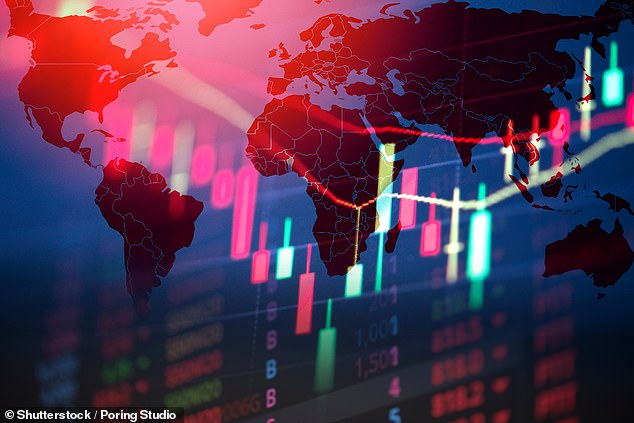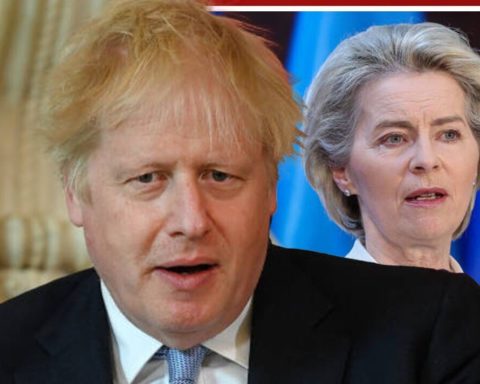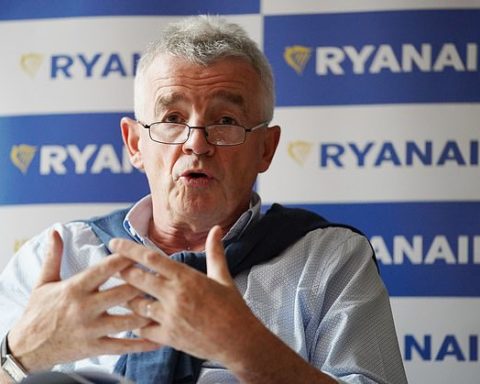Time to take cover.
Fresh data from China and the European Commission have triggered fears of an even sharper global downturn just as central banks have started tightening policy.
The latest figures from the world’s second biggest economy for April were downright gloomy, with consumer spending, factory output and employment falling at the fastest rate since the pandemic two years ago.

Gloomy forecast: The latest figures from China showed consumer spending, factory output and employment falling at the fastest rate since the pandemic two years ago
China’s fall in retail sales to 11.1 per cent was nearly double the forecast while industrial production fell 2.9 per cent in April year-on-year.
The unemployment rate rose to 6.1 per cent, the highest rate since February 2020, while in 31 cities the number of jobs lost was at its highest for four years.
As one of the world’s biggest car makers and a huge employer, the drop in demand and shortage of materials was a massive blow. Car production was down by 41 per cent.
Yet the depth of the country’s slowdown comes as no surprise.
Over the last few months the government’s zero-Covid, stay-at-home policy has enforced strict lockdowns of Shanghai as well as many of its northern regions.
You only have to look at the satellite pictures of the number of ships anchored outside many of China’s ports to see the damage that has been done to the movement of goods, which for the second time in two years is hitting supply chain shortages and therefore driving up prices around the world.
Shanghai is due to start opening up again from next month but it’s impossible to know how long the country will take to recover from these lost months.
While the authorities claim the downturn is temporary, it’s likely the central bank will have to introduce stimulus measures to speed up a return to normal.
The mood was equally gloomy across the European Union and eurozone as the EC slashed growth forecasts for this year and next. GDP for the 19-member eurozone is forecast to grow by 2.7 per cent this year, down from 4.0 per cent, and 2.3 per cent next year.
After inflation surging to 7.5 per cent in April –the highest rate in the history of the monetary union – it’s revised up to 6.1 per cent in 2022, nearly double earlier forecasts.
Higher energy and commodity prices were already putting a strain on both consumption and production across the continent.
But Russia’s war on Ukraine has worsened the problems, driving inflation even higher, which in turn is putting even greater pressure on households and businesses.
All eyes are now turned on the European Central Bank’s president Christine Lagarde to see if it follows the US and the UK in tightening policy.
The betting is that the bank will finally hike rates for the first time in a decade as well as ending its stimulus programme at its next meeting in July.
Whether the US Federal Reserve continues its aggressive rate lifting is the big unknown. But when the former boss of Goldman Sachs, Lloyd Blankfein, joins the pessimists, you can bet the landing is going to be risky.
He warns there is a ‘very, very high risk’ that the US economy is heading towards a recession.
He told CBS News: ‘If I were running a big company, I would be very prepared for it. If I was a consumer, I’d be prepared for it.’
No wonder investors are reaching for their parachutes.
Pasty and chips
Greggs, the pastie-to-sausage roll makers, and the country’s 10,500 fish and chip shops, are the latest to feel the pain of rip-roaring inflation.
Rocketing wheat prices because of Russia’s war on Ukraine and India’s latest ban on wheat exports are behind Greggs’ latest warning that it may have to put up prices by as much as 10 per cent.
The red light couldn’t come at a worse time, when the rising cost of living is already squeezing households.
More worrying is the plight of the chippie. The National Federation of Fish Friers – yes, such a group exists – fears that up to a third of all fish and chip shops could close because of soaring prices while others will have to change their menus.
This would be tragic: the British seaside would be desolate without the traditional fish and chip shop.
The war is to blame: four of the main foodstuffs used by chippies are sunflower oil, cod, haddock, and potatoes – most of which are sourced from either Ukraine or Russia.
But there are crumbs of hope: that consumers will trade down from their more expensive coffee shop-type places to back the humble British favourite.
If not, we will need a Save the Chippie campaign.
Some links in this article may be affiliate links. If you click on them we may earn a small commission. That helps us fund This Is Money, and keep it free to use. We do not write articles to promote products. We do not allow any commercial relationship to affect our editorial independence.

